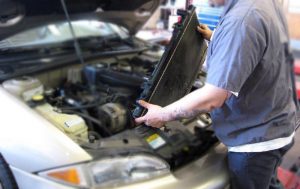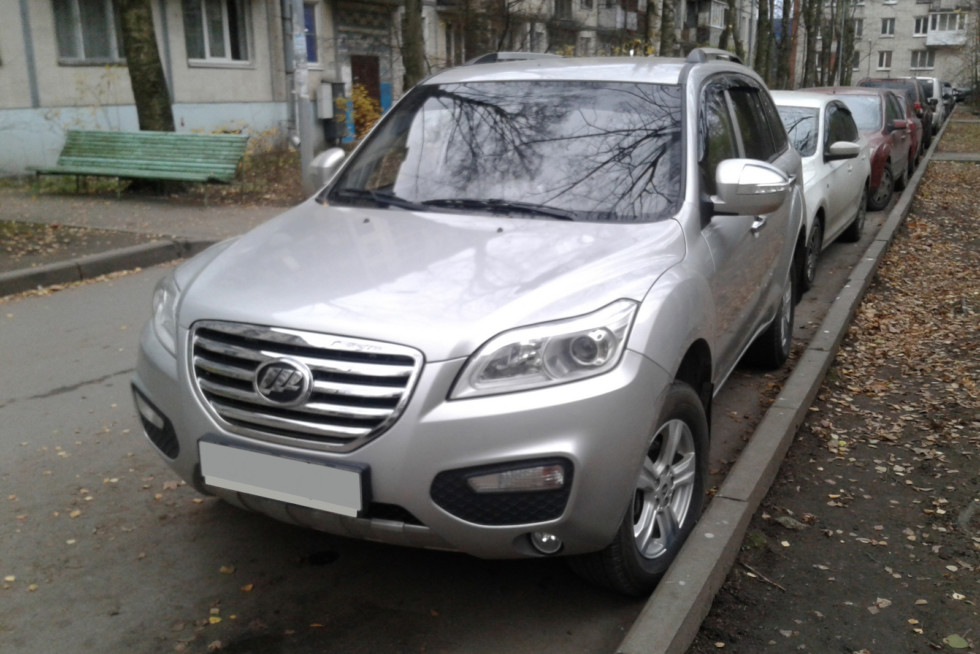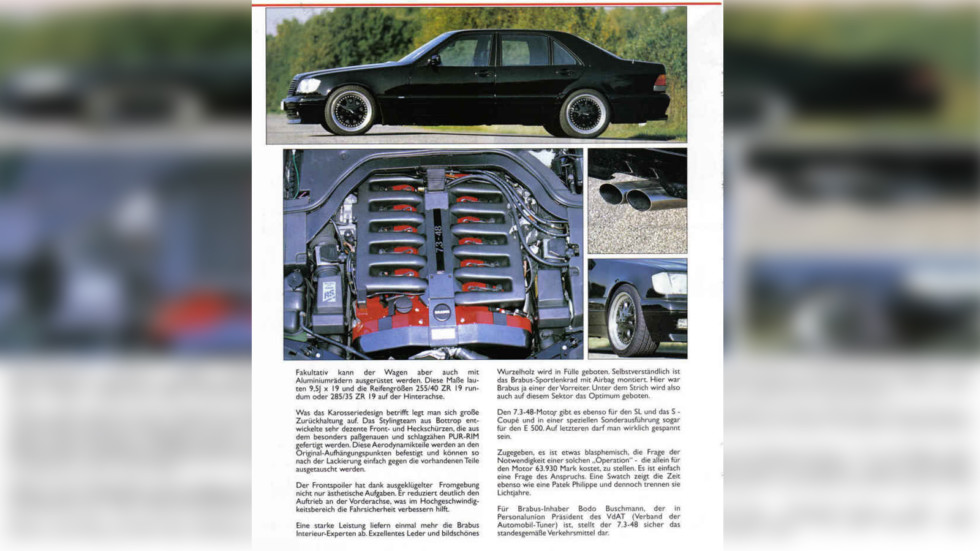ROTATOR ENGINE RADIATOR. HOW TO ELIMINATE?
 Leakage of the cooling system on the road indicates wear / crack of a part and various sealants – only a short-term solution to the problem, which will gradually lead to repair and replacement of parts. Therefore, it is not necessary to consider means to eliminate the leakage of the cooling system as a cure for trouble, in any case this is a TEMPORARY decision. If there is a radiator on a long road, and there is no possibility to solder or seal the crack, remove the safety valve from the plug. Overpressure will disappear and flow will decrease or stop altogether. SPECIAL SEALS Often, the radiator or cooling system pipes begin to flow in a long journey. For such cases of quick repair, there are special sealants that eliminate small leaks in the cooling system – just pour a jar of funds into the radiator or into the coolant tank. Composition for repair Reliably eliminates antifreeze leaks from the radiator and other elements of the cooling system. Does not evaporate, withstands high temperature, remains in the system and prevents the occurrence of leaks in the future. Safe for steel, cast iron, plastic, rubber. Compatible with all types of coolants. Does not clog the tube, hardens only in places of leaks. Such drugs are able to overcome the leak in the radiator, at the junction of the pipes, but most manufacturers indicate that the size of the leak hole should not exceed 1.5-2 square meters. mm – i.e. These are small cracks, holes. While in the coolant, the sealants themselves are in the liquid state, and after flowing out, they “freeze” under the influence of air, and form a hermetic polymer film around the leak. Such tools have some nuances, and not so pleasant ones – such sealants can clog the cooling system over time, so after its use it is strongly recommended that the cooling system be flushed out. Yes, this solution to the problem is short-term. But in order to get home or travel a few days in search of parts for repair – the solution is appropriate. “COLD WELDING” AND “METAL-Hermetic” For a more serious repair of radiators (in the presence of large cracks), you can use materials like “cold welding” – these are heat-resistant sealants-adhesives, which contain metal powder. “Cold welding” can be produced both in finished form, and in the form of individual components, which should be mixed together to obtain a homogeneous mass. Plastic cold welding Quick-putty glues with special fillers. “Grasp” for 5 minutes, harden for 15, can be machined after an hour. Possess excellent adhesion to all materials. Glue the glass, metal, plastic. A distinctive feature is the volumetric expansion at the time of “setting”, i.e. there is a “traffic jam” effect. Therefore, repair is possible when fluid leaks from a damaged unit. This is “clay”, which is applied around the damaged part, after cleaning and degreasing it. Cold welding sets in a couple of minutes, but it takes up to 1 hour to fully solidify. Due to the fact that it is well kept and has a coefficient of thermal expansion similar to metal, such a patch on a leaking radiator can sometimes serve for several years. Cold welding may be more useful than a whole box of auto tools and gaskets. And most importantly, it gives confidence in the most unpredictable situations, for example, when a radiator or a gas tank has flowed in a long journey. To search for invisible coolant leaks, there are special devices. The leak detection kit consists of a fluorescent additive, a pistol for introducing this additive into the cooling system, and a UV lamp, the light of which emits coolant that has leaked out to the outside with a fluorescent additive. However, these kits are designed for service, for private use, they can be expensive. Determine the location of the leak will help the color of antifreeze, if it contains fluorescent additives. The main thing – to inspect the pipes of the cooling system, especially in the joints. The clamp can loosen or crack.
Leakage of the cooling system on the road indicates wear / crack of a part and various sealants – only a short-term solution to the problem, which will gradually lead to repair and replacement of parts. Therefore, it is not necessary to consider means to eliminate the leakage of the cooling system as a cure for trouble, in any case this is a TEMPORARY decision. If there is a radiator on a long road, and there is no possibility to solder or seal the crack, remove the safety valve from the plug. Overpressure will disappear and flow will decrease or stop altogether. SPECIAL SEALS Often, the radiator or cooling system pipes begin to flow in a long journey. For such cases of quick repair, there are special sealants that eliminate small leaks in the cooling system – just pour a jar of funds into the radiator or into the coolant tank. Composition for repair Reliably eliminates antifreeze leaks from the radiator and other elements of the cooling system. Does not evaporate, withstands high temperature, remains in the system and prevents the occurrence of leaks in the future. Safe for steel, cast iron, plastic, rubber. Compatible with all types of coolants. Does not clog the tube, hardens only in places of leaks. Such drugs are able to overcome the leak in the radiator, at the junction of the pipes, but most manufacturers indicate that the size of the leak hole should not exceed 1.5-2 square meters. mm – i.e. These are small cracks, holes. While in the coolant, the sealants themselves are in the liquid state, and after flowing out, they “freeze” under the influence of air, and form a hermetic polymer film around the leak. Such tools have some nuances, and not so pleasant ones – such sealants can clog the cooling system over time, so after its use it is strongly recommended that the cooling system be flushed out. Yes, this solution to the problem is short-term. But in order to get home or travel a few days in search of parts for repair – the solution is appropriate. “COLD WELDING” AND “METAL-Hermetic” For a more serious repair of radiators (in the presence of large cracks), you can use materials like “cold welding” – these are heat-resistant sealants-adhesives, which contain metal powder. “Cold welding” can be produced both in finished form, and in the form of individual components, which should be mixed together to obtain a homogeneous mass. Plastic cold welding Quick-putty glues with special fillers. “Grasp” for 5 minutes, harden for 15, can be machined after an hour. Possess excellent adhesion to all materials. Glue the glass, metal, plastic. A distinctive feature is the volumetric expansion at the time of “setting”, i.e. there is a “traffic jam” effect. Therefore, repair is possible when fluid leaks from a damaged unit. This is “clay”, which is applied around the damaged part, after cleaning and degreasing it. Cold welding sets in a couple of minutes, but it takes up to 1 hour to fully solidify. Due to the fact that it is well kept and has a coefficient of thermal expansion similar to metal, such a patch on a leaking radiator can sometimes serve for several years. Cold welding may be more useful than a whole box of auto tools and gaskets. And most importantly, it gives confidence in the most unpredictable situations, for example, when a radiator or a gas tank has flowed in a long journey. To search for invisible coolant leaks, there are special devices. The leak detection kit consists of a fluorescent additive, a pistol for introducing this additive into the cooling system, and a UV lamp, the light of which emits coolant that has leaked out to the outside with a fluorescent additive. However, these kits are designed for service, for private use, they can be expensive. Determine the location of the leak will help the color of antifreeze, if it contains fluorescent additives. The main thing – to inspect the pipes of the cooling system, especially in the joints. The clamp can loosen or crack.





